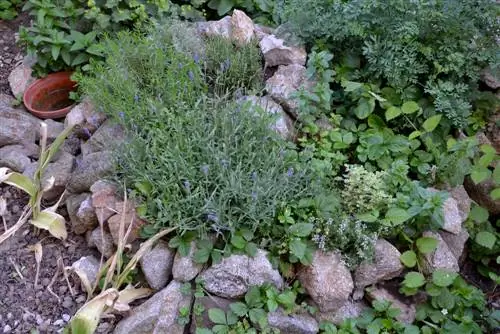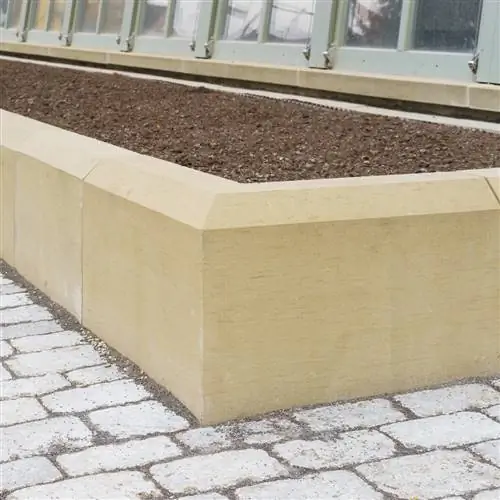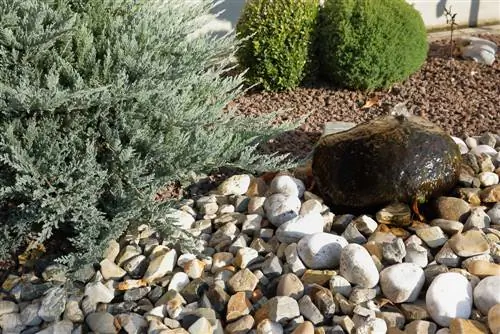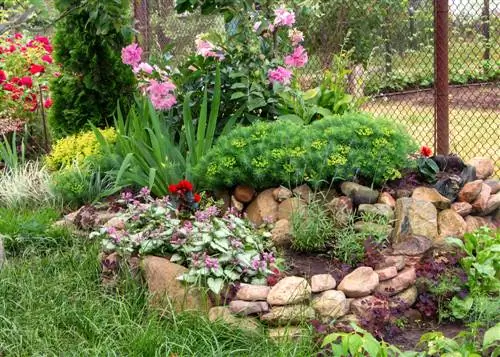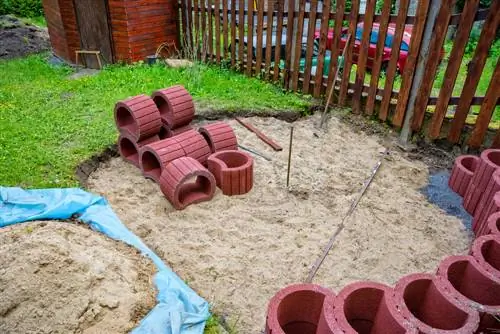- Author admin [email protected].
- Public 2023-12-16 16:46.
- Last modified 2025-01-23 11:21.
Herbs and stones get along extremely well - both vegetatively and visually. We'll explain what you can gain from stones in your herb bed and give you some great design tips.
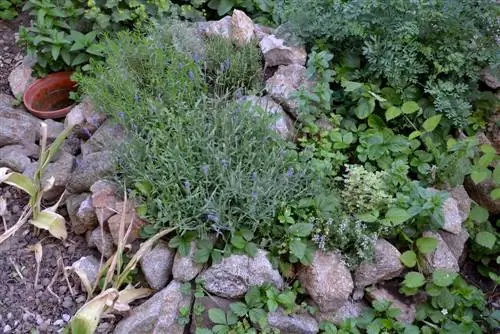
How do you design a herb bed with stones?
In an herb bed with stones you can grow Mediterranean, stone-loving herbs such as lavender, rosemary and thyme. Design options include the herb snail, the rock garden or the use of plant stones. Make sure you choose a sunny location and a sandy substrate.
What herbs have from stones
When you think of herb beds, you quickly think of rustic structures made of natural stones, decorative rock gardens or borders made of pithy paving stones. It's not for nothing that many classic herb beds have a lot to do with stones. Because many types of green aroma miracles, which have enriched people's diets and healing arts for thousands of years, originally come from rocky areas.
On barren soils but at sunny altitudes, they develop their incredibly intense and valuable ingredients, especially essential oils. They draw their energy primarily from the sun's rays - and the heat that their stony surroundings store for a long time. Simulating these growth conditions for the corresponding herb varieties is worthwhile, at least for a high-quality yield.
Stone-loving herbs are mainly those of typical Mediterranean cuisine:
- Lavender
- Rosemary
- Thyme
- Oregano
- Sage
- Laurel
- Savory
- Hyssop
- Curry herb
The stone herb garden
A stone bed system is recommended for the cultivation of these aromatic herbs, and not just from a vegetative point of view. It also has enormous decorative value for your garden. Here are a few suggestions for attractive stone bed shapes:
The herb snail
The herb snail is the classic among stone bed systems. To do this, build a spiral wall out of flat natural stones and fill the gaps with sandy soil. The typical Mediterranean herbs thrive especially in the upper area.
The Rock Garden
A rock garden that is completely covered with pebbles and allows the stone-loving plants to grow up in between is also extremely decorative and also very easy to care for, as weeds can hardly get in between. It is best to create such a stone area on a south-facing, sunny slope. You can also visually enhance the bed with a few larger stones.
Planting stones
A slightly more pragmatic variant is the planting stone (€113.00 on Amazon) system. The stone troughs, which can be purchased ready-made, can simply be stacked on top of each other like a terrace, leaving neatly separated pots for the individual types of herbs. Here, too, it is important to ensure that the location is as sunny as possible. The advantage of this visually perhaps somewhat more mundane version is, above all, the easy accessibility for care and harvesting.

